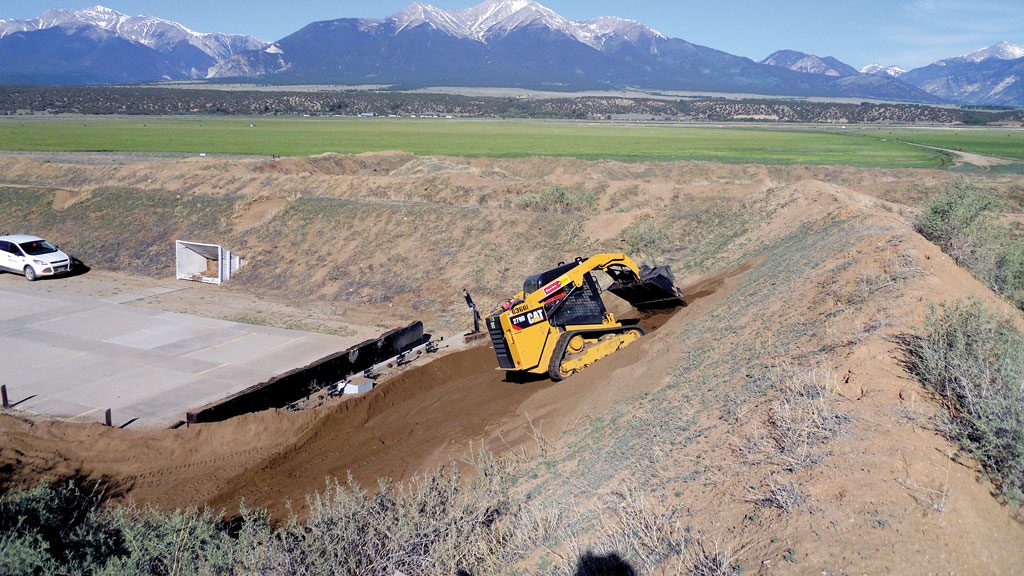You might say Metals Treatment Technologies’ (MT2) business took off with a bang — or, more accurately — a series of bangs heard around the United States and more recently, Canada.
That’s because MT2, the short form of the Colorado-based company, found its niche in remediation of lead from gun ranges.
Today, revenues are breaking US$20 million and it has expanded its range of expertise into Canada where it has cleaned out lead contamination from bullets at RCMP gun ranges and even the gun range near Ontario’s Bruce nuclear power plant.
As co-founder Jim Barthel explains it, there was a fair bit of luck, but they had prepared by developing the patented technology Ecobond to extract lead and render it inert.
The founders had been in the environmental engineering business for 15 years before founding MT2 in 2000.
The opportunity for gun ranges literally came out of the blue.
“What we do is separate the lead from the berm at the range and then use a patented technology using sulphates and phosphates to bond it with the same minerals it was found with when originally mined,” Barthel says.
“We keep the larger chunks to be recycled and reused so the range can recover some costs but the fine chunks we process so they aren’t harmful to humans.”
Health Canada notes while lead is a naturally occurring element found in rock and soil, extensive manmade use has resulted in its widespread presence in the environment.
Lead is found in air, dust and soil in Canada as well as in food and drinking water. Levels of lead in the environment have declined significantly over the past few decades.
Lead-based paint and lead-contaminated dust in older buildings are the most common sources of lead poisoning in children, according to the Mayo Clinic, which also cautions that those doing home renovations, commercial demolition or working in auto repair shops are at risk for lead exposure.
The Mayo Clinic says symptoms of lead poisoning include, high blood pressure, joint and muscle pain, memory impairment and headaches.
U.S. Occupational Safety and Health regulations require firing ranges to protect their employees because of the higher risk they face.
The air must be tested regularly and if levels exceed set limits, employees must be tested as well in follow ups. The contamination involves lead bullets that can fragment on impact, sending small particles as lead dust into the air.
Also, lead primers in the cartridge creates dust which is emitted with the gun smoke on firing.
Standard HVAC systems may not adequately remove the contamination. Also, there’s a risk from simply handling cartridges because the lead can penetrate through the hands and skin.
In 2017, the RCMP admitted that a room adjoining the range in the basement of their “D” Division headquarters in Winnipeg was contaminated with lead and had lead to civilian workers retrieving files from there getting sick from exposure.
Public Health Ontario has also warned about high levels of contamination in gun range users, especially competitive shooters. It recommended the use of lead-free ammunition which many gun experts believe is a superior material for projectiles.
The proliferation of guns and firing ranges and their legacy of lead, both indoor and outdoor, has provided a valuable niche for MT2.
“We go in and depending on the range, indoor or outdoor, we excavate the berms and then filter out the large pieces and then process the smaller pieces of lead,” he says. “Some of the newer ranges use granular rubber in their berms so we’ve developed a method to deal with separating out the lead in those as well.”
There are other areas where Ecobond technology has been applied as well, he says.
“There was lead in everything, gasoline, paint,” says Barthel. “So we have also developed a paint version of Ecobond which we sell through retailers, including Home Depot in Canada and Mission Hills Environmental Services, Inc. in B.C.”
Ecobond paint is a latex-based paint that is applied over a lead-painted surface, he says, sealing it.
“It actually penetrates the existing paint and bonds with it,” he says, noting a common application is prior to building demolition to mitigate and minimize and lead dust.
They’ve also extended their paint range to Ecobond OdorDefender, a high-level odour-blocking paint to block cigarette and marijuana smoke residue and for application after fires to improve indoor air quality.



Recent Comments
comments for this post are closed